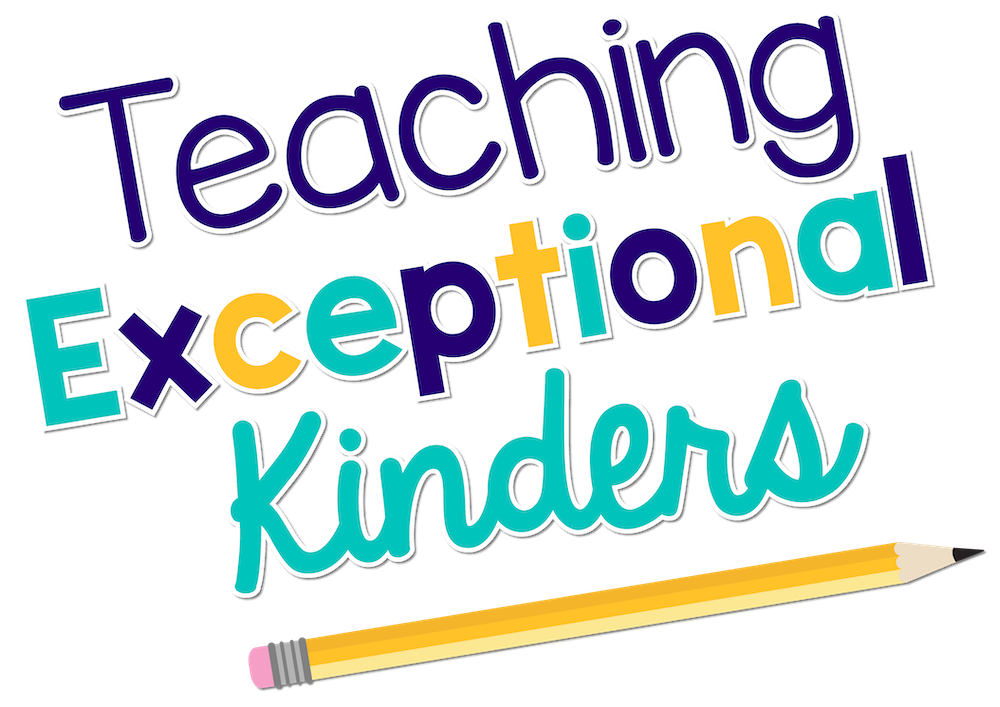How to Teach Students to Write Complete Sentences
It never ceases to amaze me how much kindergarteners grow and progress in one school year, especially in their writing skills. Many students start the year not knowing the difference between a number and a letter. Other students haven’t even held a pencil before. However, most will be writing complete sentences by the end of the year! As we all know, this progress doesn’t happen overnight. It takes a year full of direct instruction and lots of practice! In this post, I’m going to share with you my best tips for how to teach students to write complete sentences.
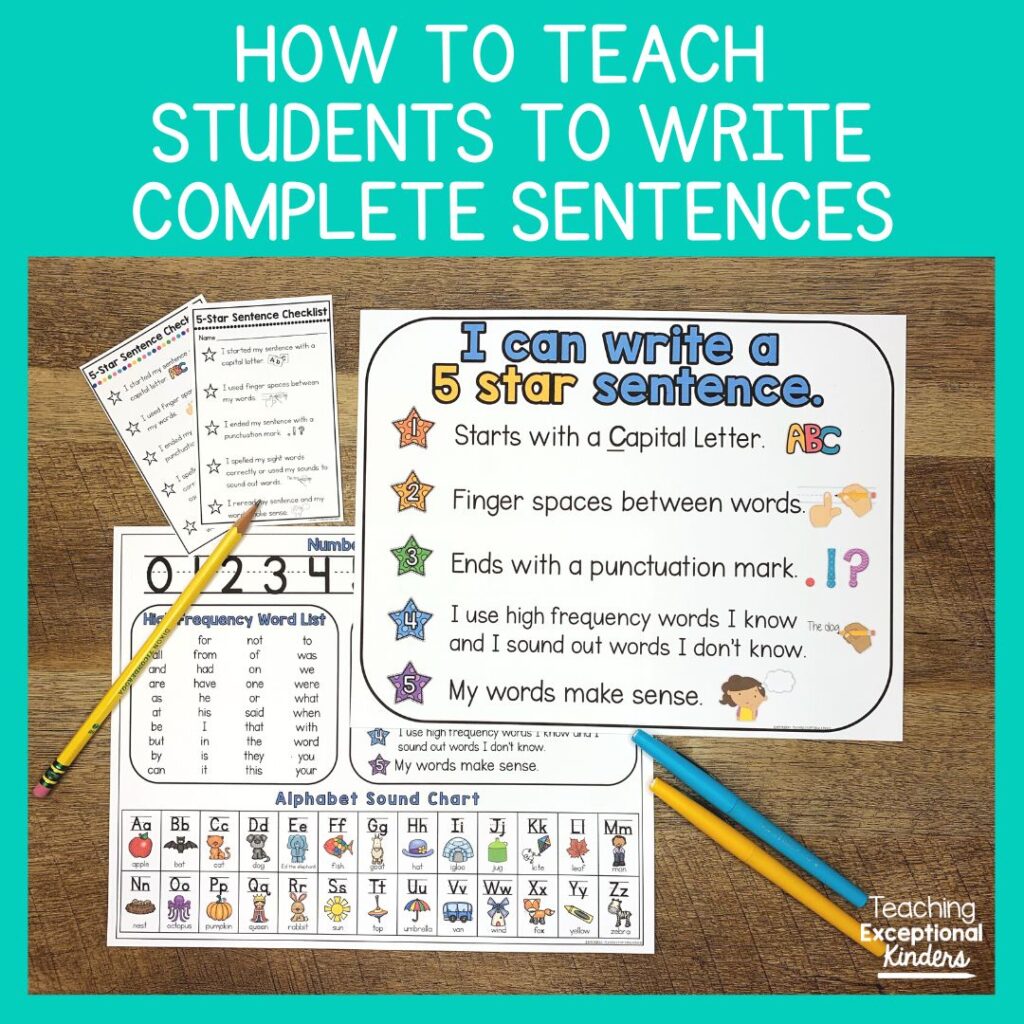
5 Tips for Teaching Students to Write Complete Sentences
1. Think, Speak, Write
Teaching students to write complete sentences requires explicit instruction. Before students can write sentences, they need to know what they actually are. It’s helpful to make the link between oral and written language, so they understand that writing is just putting their thoughts down on paper. As students listen to basic, complete sentences being spoken out loud, they will start to hear almost a rhythm of subject and predicate.
A great way to connect oral to written language is using the think-speak-write process. You can put a simple picture on display and ask students to think of one thing they’d like to say about the picture. (You could use a simple sentence frame to guide this process.) They will think about this sentence silently first. Then they can practice saying this complete sentence to a partner. Once they have said it, they can write it down. This process can also be modeled through a whole-class activity.
2. Practice Five-Star Sentences
As students get more comfortable with putting their complete thoughts on paper, they’re ready to learn more about conventions. Teaching students about five-star sentences is an easy way for them to remember the components of a complete sentence:
- Start with a capital letter
- Use a finger space between words
- End with a punctuation mark
- Spell known words and sound out unfamiliar words
- It makes sense
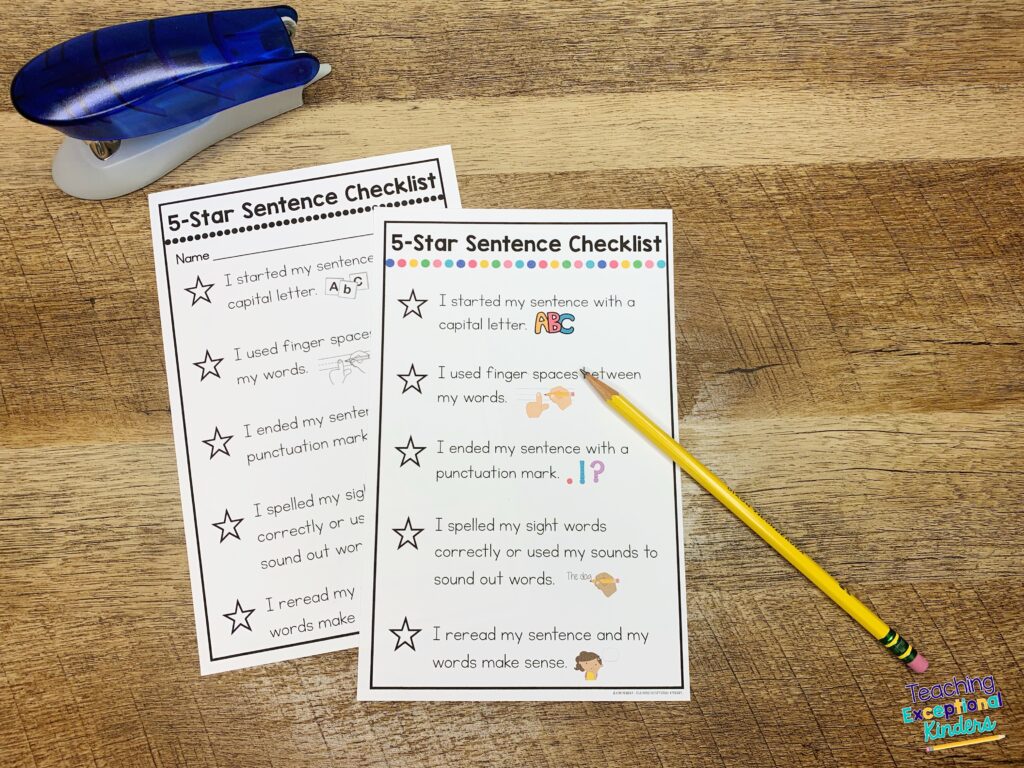
By breaking it down into five easy steps, students can start to become more independent during the writing process. Be sure to model these steps any time you do shared writing or interactive writing together as a class.
3. Use Sentence Starters
Sentence starters are a great way to support beginning writers! One way that they can help young learners is by including words that might be unfamiliar or challenging for them. For example, if you want students to describe a snowman, you would use a sentence starter with “The snowman ________.” This takes away the frustration of spelling this unfamiliar word and helps students focus on their ideas instead.
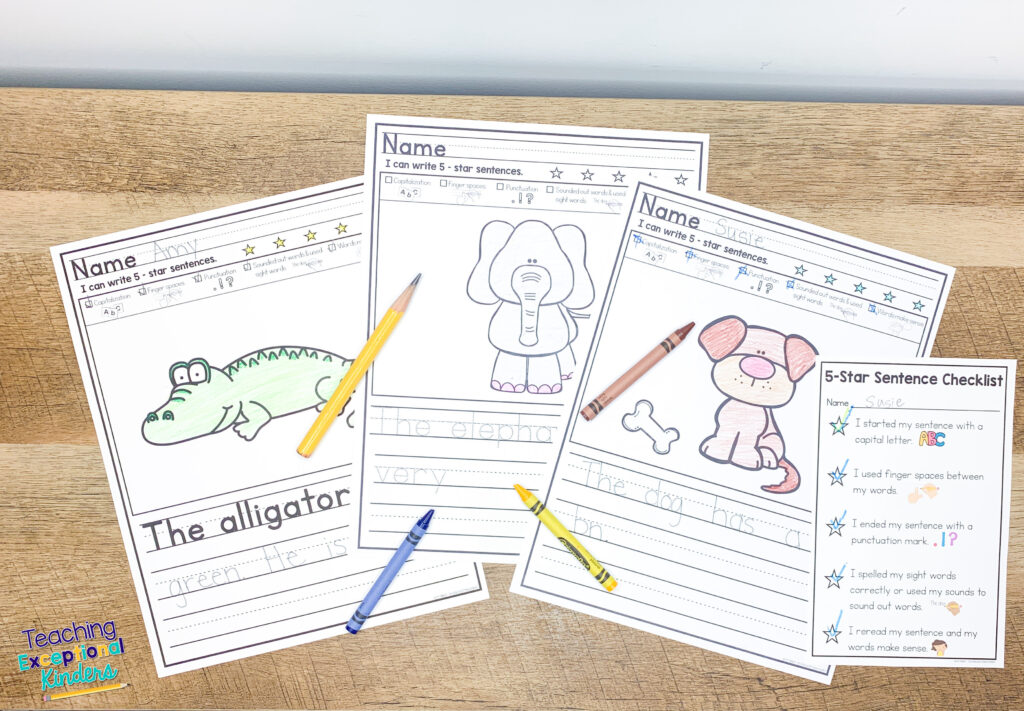
Sentence starters can also keep students focused on the task at hand. If writing assignments are too open-ended in kindergarten, some students can quickly become overwhelmed by all of the things they want to put on paper. Other students will have trouble coming up with any ideas at all. Providing a couple of words as a sentence starter gives students just the kick-start they need to write a complete sentence.
4. Picture Writing Prompts
In addition to sentence starters, picture writing prompts are helpful for young students who are learning to write complete sentences. We’ve all stared at a blank page or computer screen before, not knowing exactly what we want to write about…and we’re adults! This can be an even bigger challenge for kindergarteners who are still learning the basics of writing. Picture writing prompts can give students just the inspiration they need to come up with their own sentences.
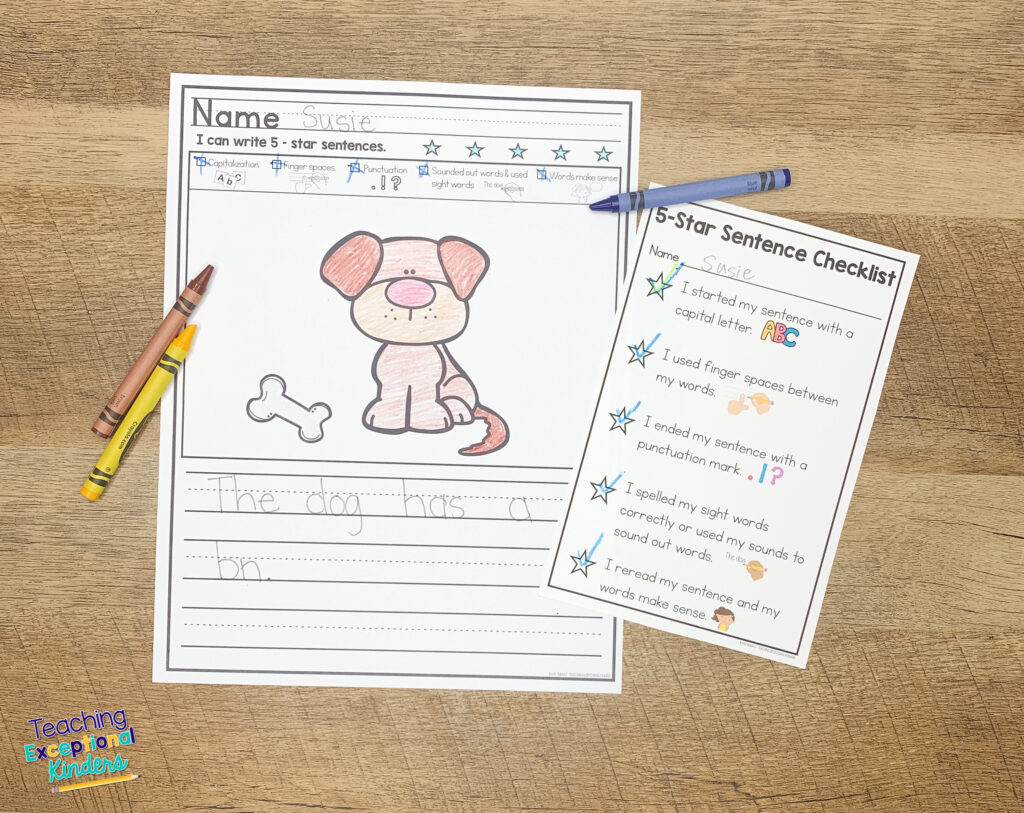
A picture writing prompt can easily be scaffolded to support individual students in your classroom. You might give some students just the picture and have them write the full sentence independently. Other students might need the picture prompt plus a sentence starter.
5. Provide Ongoing Visual Support
Overall, teaching kindergarteners to write a sentence can be tricky, but using visuals can help! As students continue to practice writing complete sentences, it’s important to provide plenty of visual support. There are many different ways that you can incorporate visuals into sentence writing practice.
First, you can keep the five-star sentence reminders posted in the classroom. You can refer to this during whole-group instruction and small-group writing practice. Students can also use a five-star sentence poster as an anchor chart when writing independently. You can also provide students with their own individual copy of the five-star sentence checklist to keep at their desks.
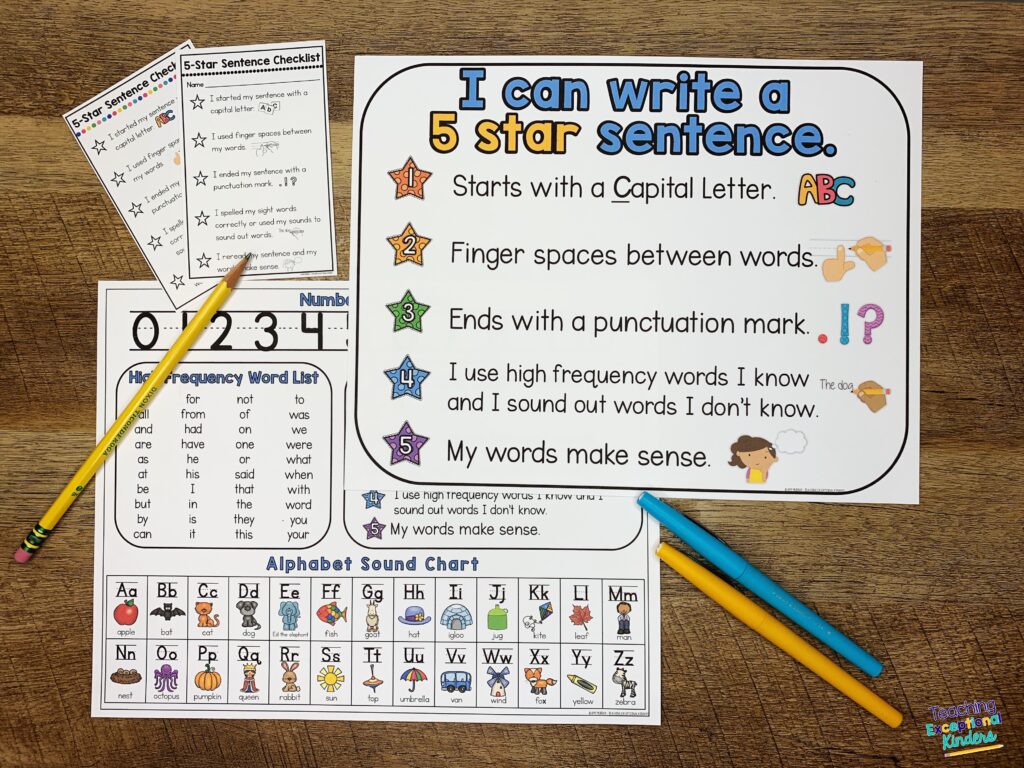
Another way to support beginning writers is to provide a helpful reference sheet. In addition to the five-star sentence checklist, it could also include an alphabet sound chart and common high frequency words. This resource is perfect to include in writing folders! It can help students as they work to be more independent writers.
Finally, you can add visual supports to the writing paper that you use. I like to add the five-star sentence components to the top of the writing paper, which reminds students of what they should include in their writing. I also like to add five blank stars that students can color in as they check their work.
Printable Supports for Writing Complete Sentences
I have created a time-saving resource that includes many different writing printables that you can use in your kindergarten classroom. These writing checklists, posters, reference sheets, and anchor charts will provide the visual support your kindergarten students need. These resources will help your students stay on track when learning to write sentences with proper conventions.
If you’d like to take a closer look at everything included in this resource, you can find it in the Teaching Exceptional Kinders shop or on TPT.
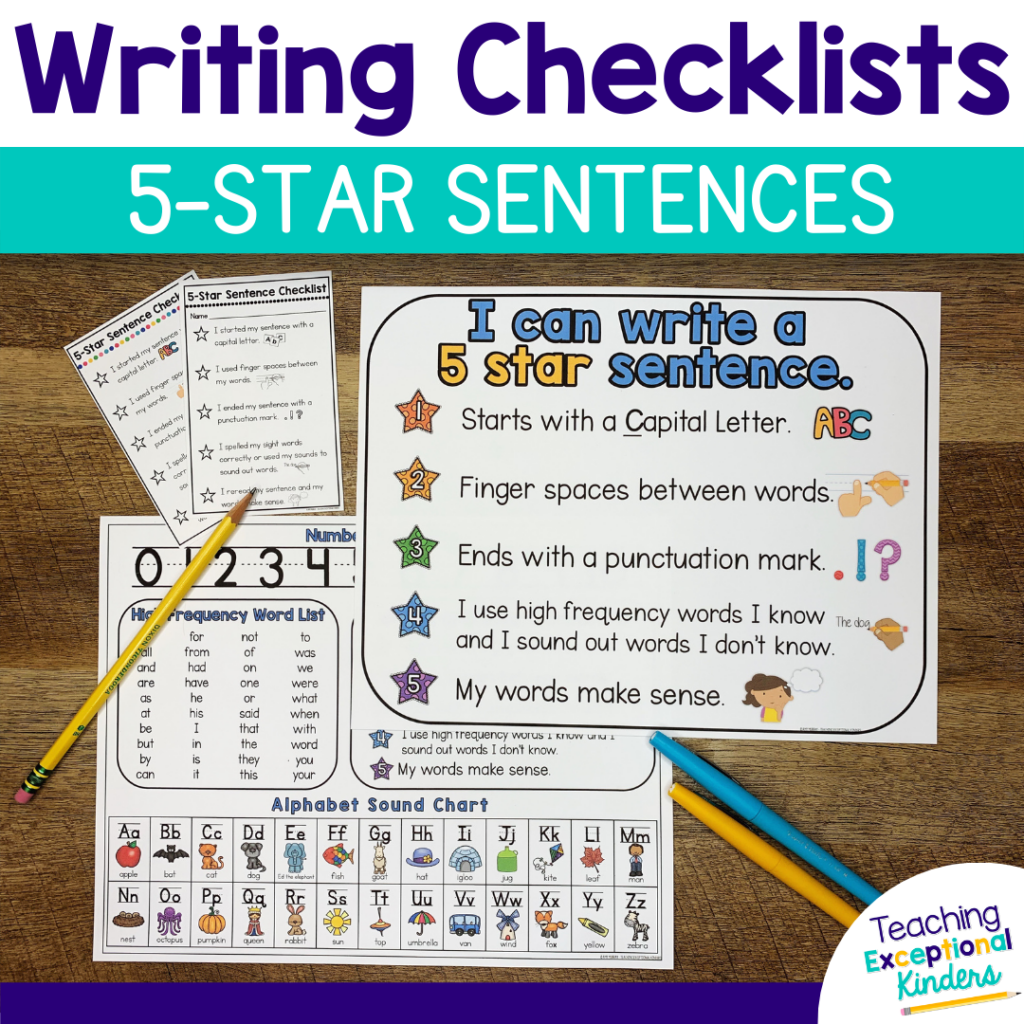
Save These Writing Tips for Kindergarten
I hope that these tips and resources will come in handy as you teach your students how to write complete sentences. If you’d like to come back to this post later, be sure to save it! Just add the pin below to your favorite teaching board on Pinterest. You’ll be able to quickly find these tips and resources whenever you need them!
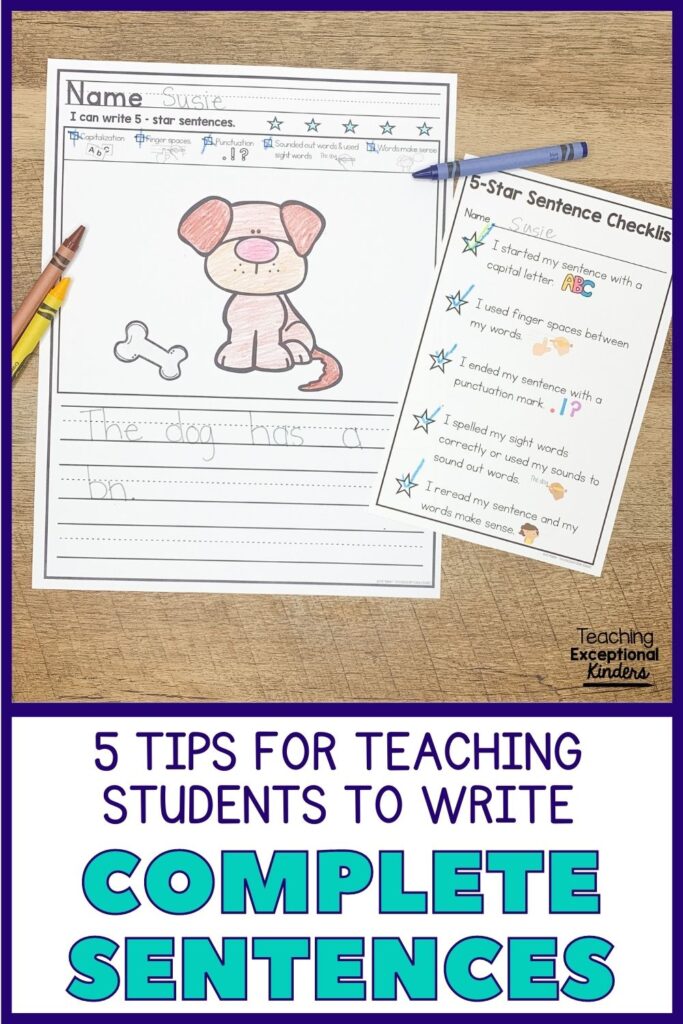
Amy
SITE DESIGN BY LAINE SUTHERLAND DESIGNS

